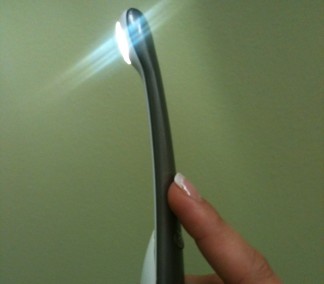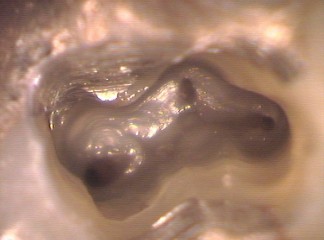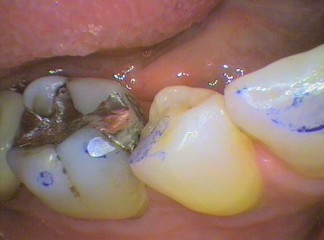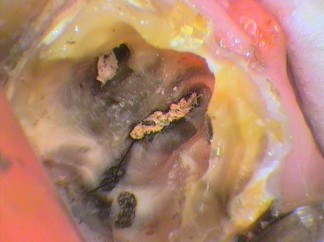Need an Appointment?
If you'd like to book an appointment with the dentist at Seymour Dental then contact us, or call us in Dulwich Hill, Sydney on (02) 9564 2397.
The intra-oral camera has been an excellent device for dental detective work and it’s more fun than a magnifying glass! Our intra-oral camera (link to facilities) not only lets us show patients what’s going on in their mouth, but also allows us to make the right diagnosis and recommend the best course of dental treatment. The camera is actually a video camera that “captures” images with excellent magnification. It has its own intense light source ringed around the camera that illuminates the darkest area of the mouth. The camera has two modes of showing images. The mode is a single image that takes up the whole screen. The second mode is where four images can be displayed at a time dividing the screen into quarters. This mode is often used to show the progression of a treatment or different aspects of the same object. For example showing the before and after of removing “tartar” (calculus) off the teeth. Revealing the hidden extent of decay can be an eye opener (pardon the pun).
Examination of teeth with the camera may help with diagnosis as it magnifies the object greatly. It can shows cracks in the tooth structure. When doing root canal treatment, the openings of the root canal can be seen more easily. Root canal opening can be as small as 6/100 of a millimetre. It’s about the size of the full stop on this page. Finding these canals can be very frustrating in itself. The image can then be stored to make it easier to find in the next visit. (Thank goodness!)
Sometimes the camera helps to identify if a mark on the tooth is a stain or decay. Are you grinding your teeth? The camera can identify grind marks beautifully. As there is more to your mouth than teeth (title of a future blog article), problems with the tongue, cheek, soft and hard palate, gums and lips can be identified and recorded. These include ulcers, swellings, red and white patches, bruising, bleeding, cysts and other “nasties” (like cancer). The mouth is often an early warning “device” for other problems in the body, such as diabetes.
As with digital xrays and digital OPG, the intra-oral camera is linked to software in the computer. So an image displayed on a monitor can also be stored in the computer as part of the records. Not only can an image be stored but it can be magnified and manipulated, to gain more information. This is great educational tool for the young and the old, including the dentist! Sometimes we have to ask our collegues for second opinions or even send images to specialists with a letter of referral. “A picture is worth a thousand words” is very true.
Next week’s article Cracked teeth – Ouch!
 479 Marrickville Road
479 Marrickville Road



